Key takeaways:
- Gender-sensitive assessments consider diverse gender experiences, leading to more equitable outcomes and richer data.
- Advocating for gender equality contributes to economic growth, social development, and challenges harmful cultural norms.
- Engaging community members and using mixed methods in data collection enhances understanding and trust in assessments.
- Future directions include improving data collection methods and prioritizing training for local assessors on gender sensitivity.
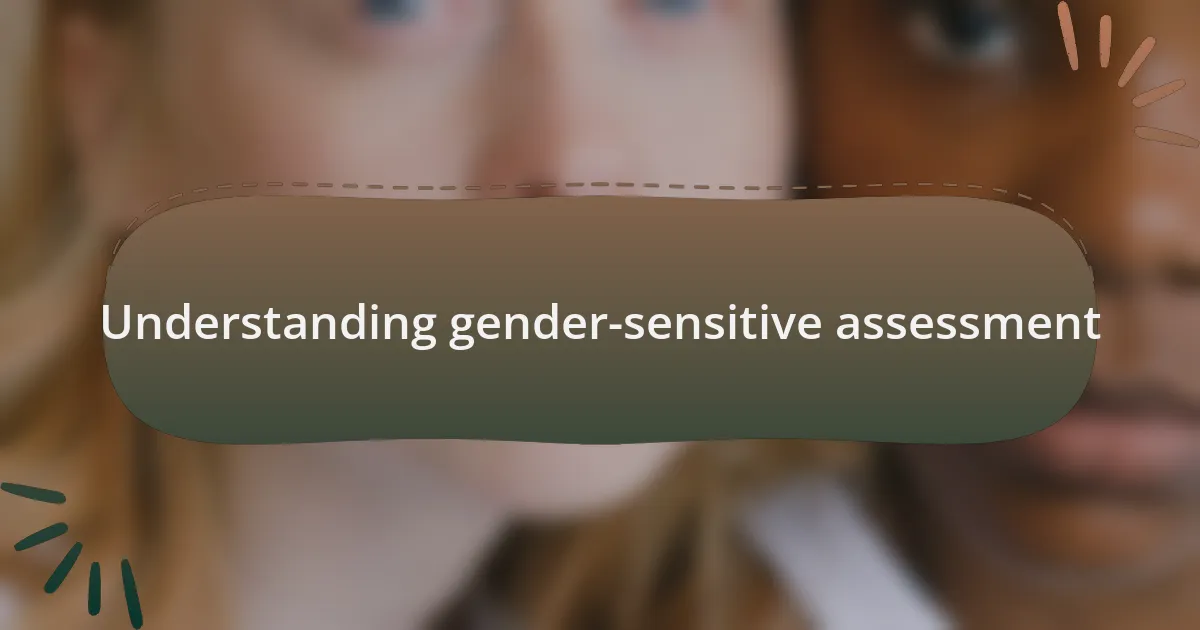
Understanding gender-sensitive assessment
A gender-sensitive assessment goes beyond traditional evaluation methods by explicitly considering the different needs, roles, and challenges faced by individuals of different genders. When I first learned about this approach, I realized it wasn’t just about inclusion; it was about understanding the complexities that shape experiences in various contexts. Have you ever thought about how some assessments might overlook the unique contributions women or marginalized gender groups can offer?
In my experience, incorporating gender-sensitive assessments has led to more equitable outcomes in projects I’ve been involved with. For example, while working on a community initiative, we used surveys that asked about the specific barriers people faced based on their gender. This not only provided richer data but also fostered trust within the community, as people felt heard and valued. It makes me wonder—how often do we miss the opportunity to capture diverse perspectives that could transform our understanding of an issue?
When we assess programs or policies without this lens, we risk perpetuating existing inequalities. Reflecting on past evaluations that didn’t account for gender, it becomes clear how vital this approach is. I often think about the missed opportunities for change and growth—could a simple shift in perspective really lead to a more inclusive environment?
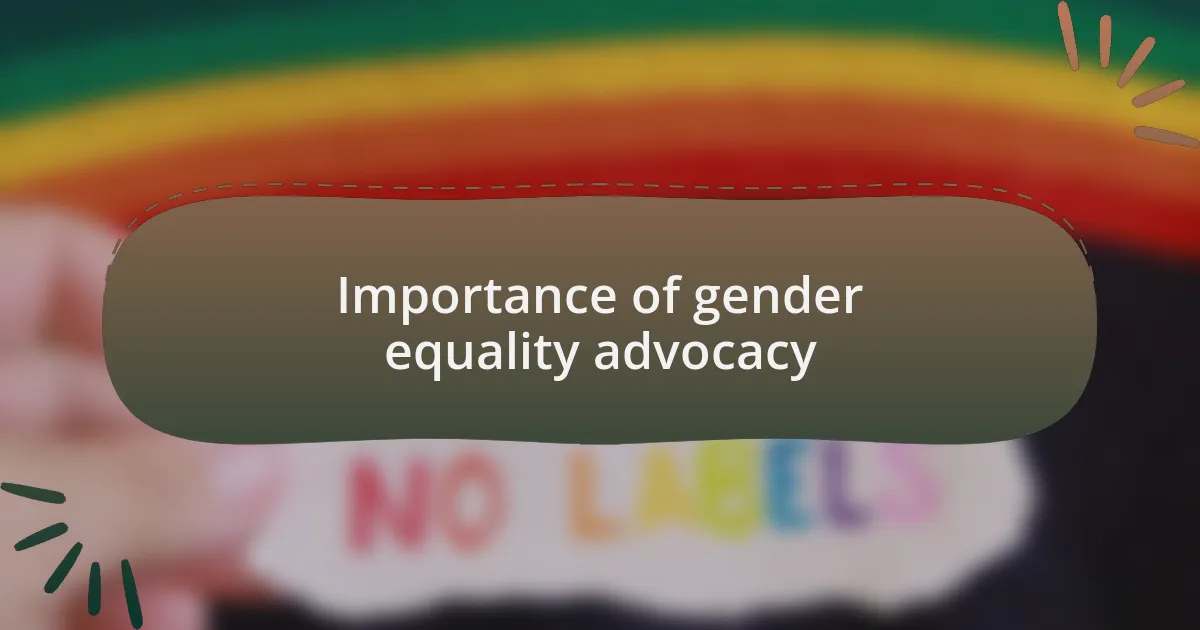
Importance of gender equality advocacy
Advocating for gender equality is crucial because it lays the groundwork for a just society. I remember a community workshop I attended where participants openly discussed how gender biases affected their daily lives. Listening to these stories, I felt the weight of inequity firsthand; it reinforced my belief that every voice matters in shaping policies that promote true equality.
Gender equality advocacy also drives economic growth and social development. In my observations, communities that actively support gender equality tend to flourish. For instance, I witnessed a local business thrive after implementing inclusive hiring practices that brought diverse talents together. It’s a powerful reminder—how can we ignore the potential impact of diverse perspectives in driving innovation and resilience?
Furthermore, gender equality advocacy has the potential to challenge cultural norms that hinder progress. Reflecting on conversations I’ve had with friends from different backgrounds, it’s clear that questioning long-held beliefs can provoke necessary change. Have you noticed how powerful a simple discussion about gender roles can be? It sparks curiosity and pushes us to reconsider our own biases, encouraging more people to advocate for equity in their circles.
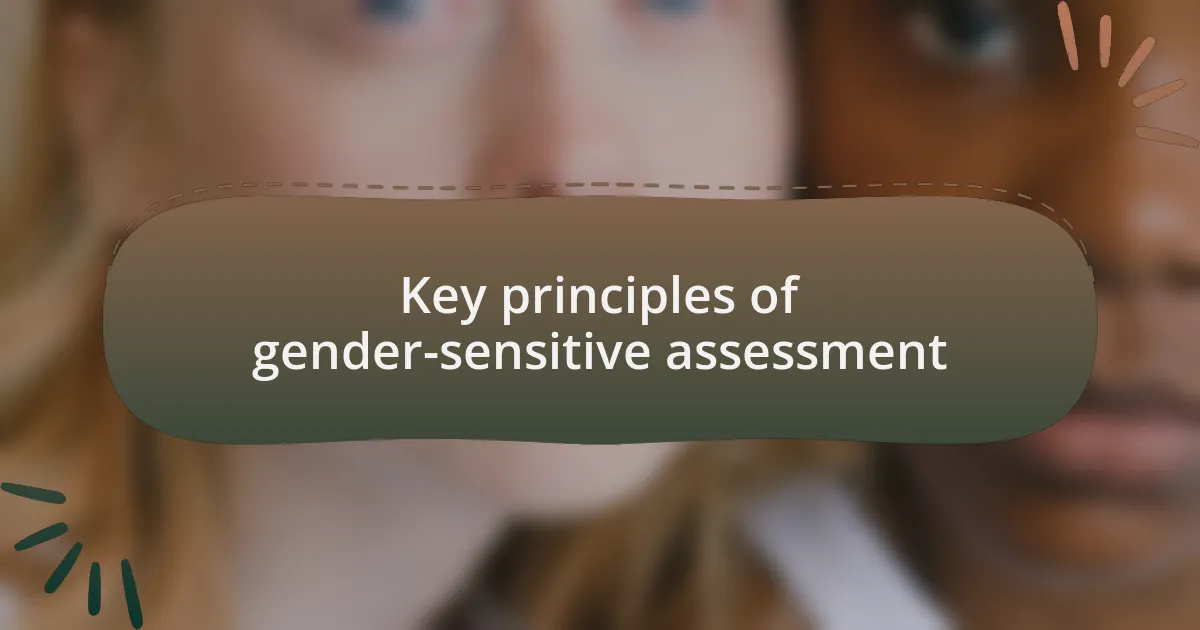
Key principles of gender-sensitive assessment
Key principles of gender-sensitive assessment rest on the foundation of inclusivity and awareness of diverse experiences. When I facilitated a gender sensitivity training, it struck me how essential it is to actively listen to the voices of marginalized groups. Their unique perspectives can illuminate aspects of our society that others might overlook, prompting us to ask: how often do we miss these critical insights in our assessments?
Another crucial principle is the acknowledgment of power dynamics at play, something I witnessed during a project evaluation. The team had focused mainly on quantitative measures of success, neglecting how power imbalances affected community engagement. It made me realize that without addressing these dynamics, our assessments risk reinforcing existing inequalities. Don’t you think it’s vital to examine who holds the power in any given situation?
Lastly, I’ve found that a commitment to intersectionality significantly enhances the effectiveness of gender-sensitive assessments. Reflecting on my own experiences collaborating with different community organizations, I often noticed how overlapping identities shape individuals’ experiences. If we truly want to foster an environment of equality, shouldn’t our assessments reflect the complexities of those identities? Understanding this principle can lead to richer insights and more effective advocacy strategies.
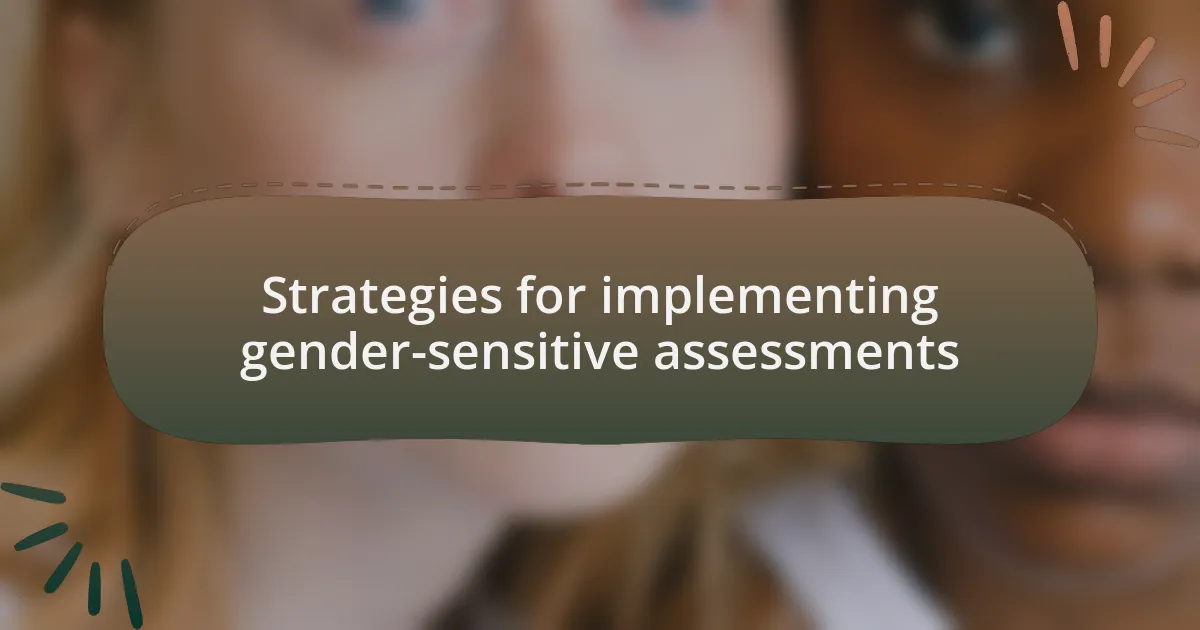
Strategies for implementing gender-sensitive assessments
One effective strategy for implementing gender-sensitive assessments is to engage with community members throughout the process. I remember conducting a project where we invited local women to share their experiences with healthcare services. This dialogue not only enriched our data but also cultivated trust within the community. How often do we overlook the wisdom that resides within the very groups we aim to support?
Another approach is to utilize mixed methods in data collection, balancing qualitative and quantitative insights. I once led a team that integrated focus groups with surveys, which allowed us to capture the emotional narratives behind the numbers. This combination enhances our understanding of the issues at hand—don’t you think that numbers alone can sometimes mask the real story?
Lastly, ongoing training for assessors is crucial. During my tenure with an NGO, we developed workshops that emphasized gender sensitivity and intersectionality. The results were striking; assessors became more attuned to subtle biases in their evaluations. Isn’t it fascinating how a little education can fundamentally shift perspectives and improve assessment outcomes?
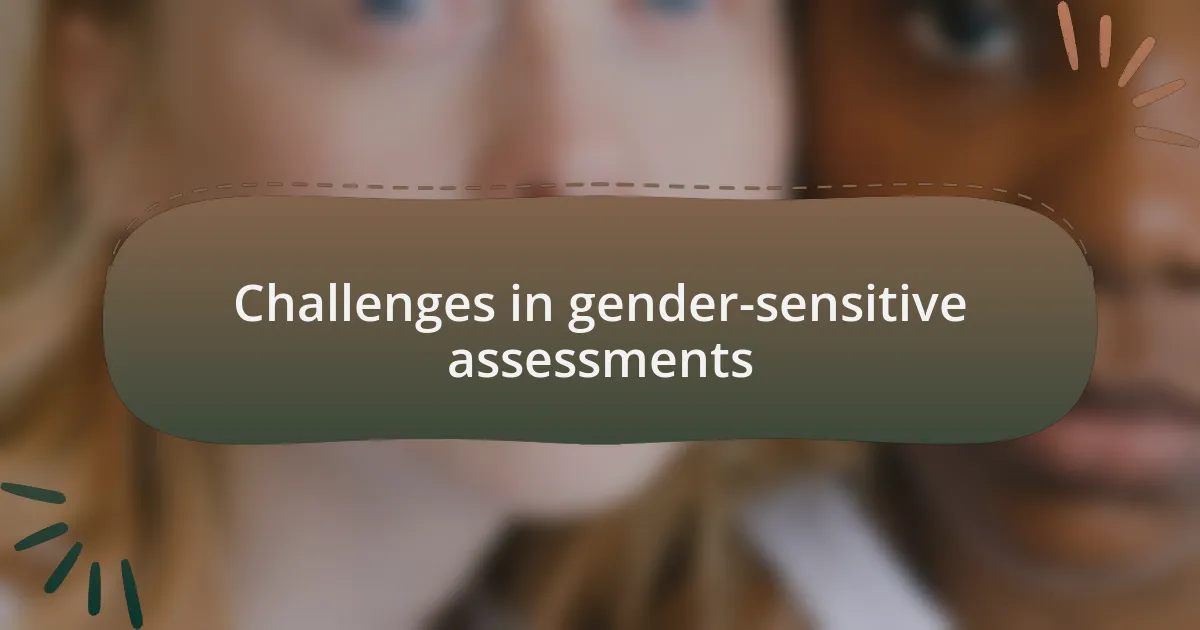
Challenges in gender-sensitive assessments
Assessing gender sensitivity isn’t without its hurdles. For instance, I remember working on a project where we faced pushback from stakeholders who were resistant to acknowledging gender disparities. It was disheartening, but it underscored how deeply ingrained biases can obstruct the very change we seek. Have you ever encountered resistance to ideas that challenge the status quo?
Another challenge is the quality and availability of disaggregated data. In one of my earlier assessments, I struggled to find reliable statistics that differentiated between men’s and women’s experiences. This gap often leads to underestimating the specific challenges faced by marginalized groups, leaving their voices unheard. It makes me wonder: how can we make informed decisions when the data doesn’t tell the whole story?
Lastly, cultural norms can complicate the assessment process. During one evaluation, I noticed that certain communities were reluctant to discuss gender issues openly due to societal taboos. This hesitation can lead to incomplete or skewed findings, which ultimately weaken our understanding and response. Isn’t it vital that we find ways to navigate these cultural landscapes while still prioritizing honesty and inclusivity in our assessments?
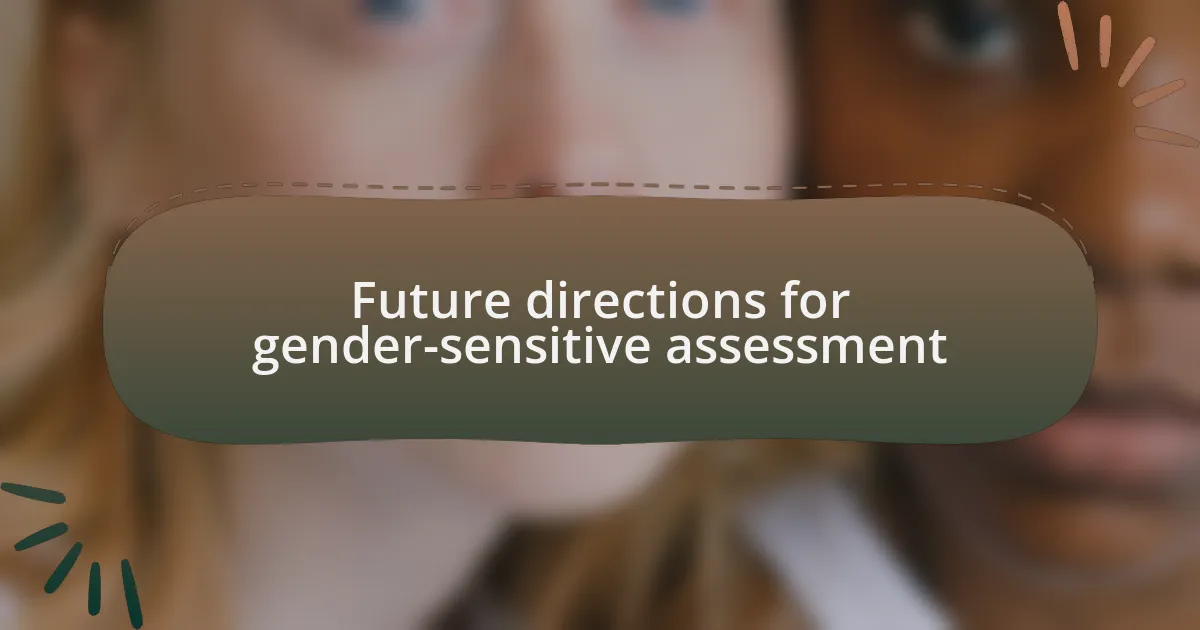
Future directions for gender-sensitive assessment
As we look to the future of gender-sensitive assessments, it’s clear that enhancing data collection methodologies is crucial. From my involvement in various initiatives, I’ve seen how leveraging technology can dramatically improve data accuracy and representation. For instance, employing mobile surveys in remote areas can help capture critical gender-disaggregated data that traditional methods often overlook.
There’s also a growing need for collaboration across disciplines. Reflecting on my past experiences, I remember a project where partnership with local organizations transformed our understanding of gender dynamics. By integrating insights from community activists, we crafted assessments that were not only relevant but also actionable. How can we ensure that future assessments continue to engage these vital voices in the process?
Lastly, training and capacity-building initiatives must become a priority. I’ve observed firsthand how empowering local assessors with gender sensitivity training can lead to more nuanced evaluations. When individuals who are already embedded in their communities understand the intricacies of gender issues, the insights gathered become richer and more impactful. Isn’t it time we invest in equipping everyone involved with the tools to make a real difference?